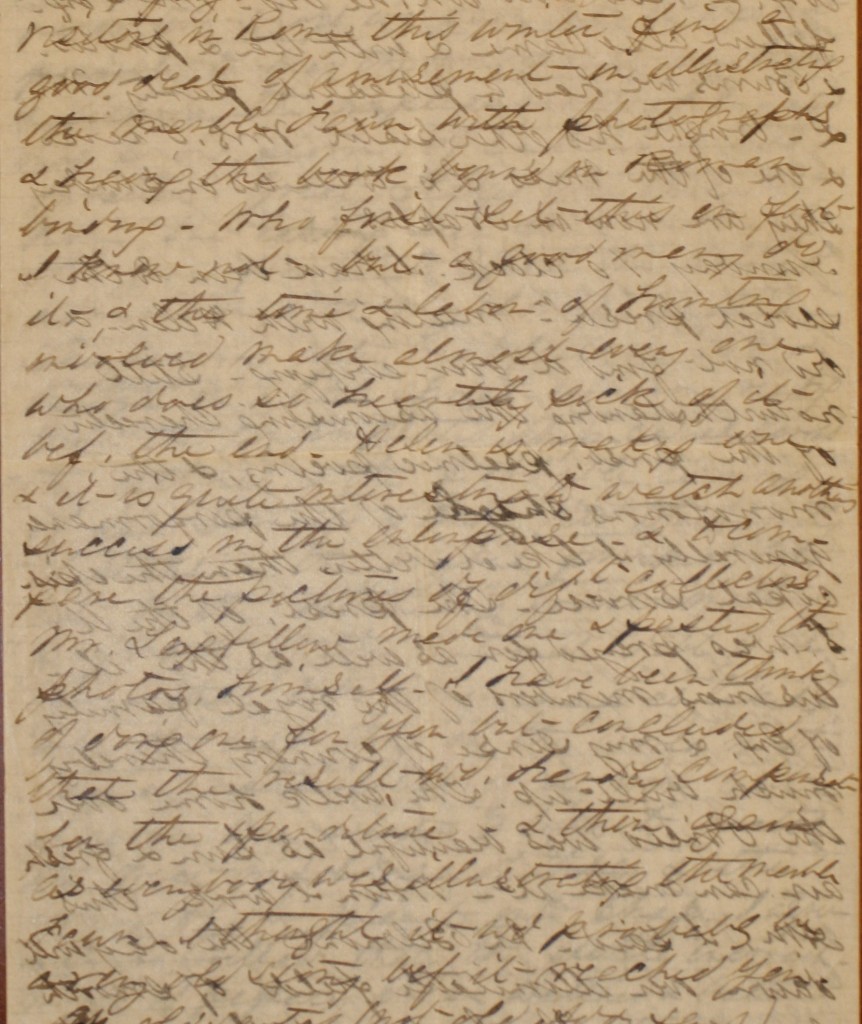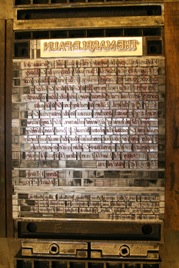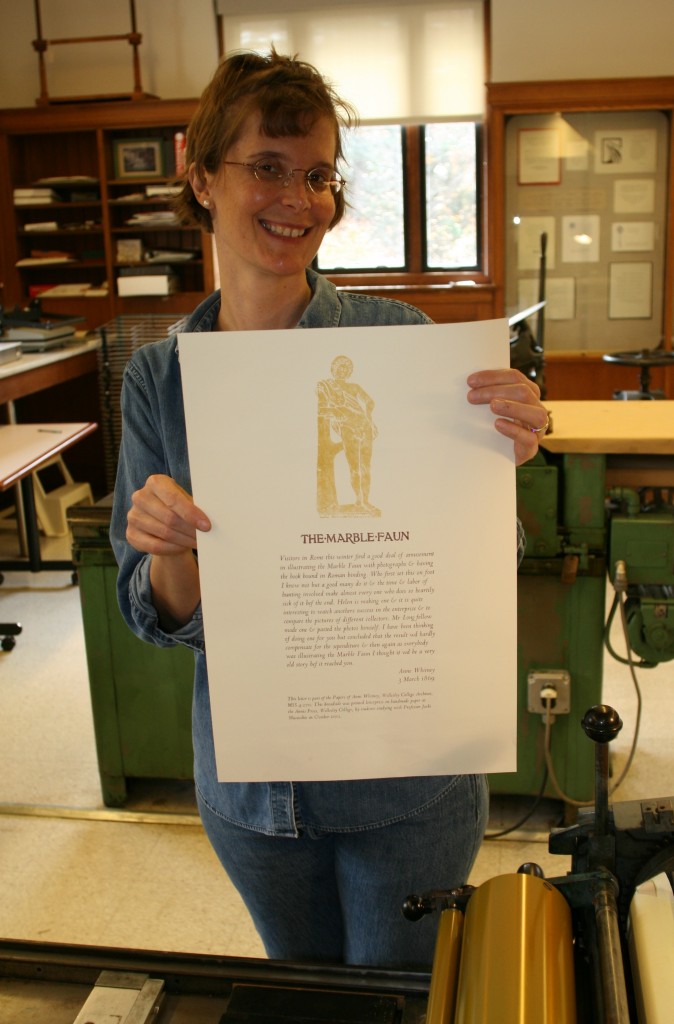
Excerpt from MSS.4.270, Wellesley College Archives.
Letter from Anne Whitney to her sister Sarah Whitney, March 3, 1869.
This semester, Library and Technology Services (LTS) and Professor Jacqueline Musacchio of the Art Department are collaborating on a project involving the letters of nineteenth-century American poet and sculptor Anne Whitney, which are held by the Wellesley College Archives. Students in Professor Musacchio’s first-year seminar — Art, Tourism, and Gender in Late Nineteenth-Century Italy — and four independent study students are using Whitney’s letters as original source material in their coursework. They have been working closely with the originals and the newly created digital surrogates of the letters by transcribing and annotating them. The independent study students also had the opportunity to work with the text of the letters in another way: they spent some time in the Book Arts Lab (BAL) making handmade paper and then printing a broadside with a transcription from one of Whitney’s letters detailing her travels to Rome.
Professor Musacchio chose a passage from a letter dated March 3, 1869, in which Whitney describes to her sister a popular tourist activity of the day. Visitors to Rome would illustrate a copy of Nathaniel Hawthorne’s 1860 novel The Marble Faun with photographs and then have the book specially bound to bring home as a souvenir.
The broadside project began a few weeks ago when BAL staff and Professor Musacchio’s independent study students pulled sheets of handmade paper for use in printing the broadside. The paper was made with premium Ecuadorian abaca, which provided thin, crisp sheets, mimicking the paper Whitney actually wrote on. This process involved beating the fibers into a fine pulp that was placed in a vat. The students then used a mold and deckle to pull the fibers into flat sheets, which were then transferred to felts so they could be pressed and dried.
After the paper dried, Professor Musacchio’s independent study students printed the broadside on their handmade sheets using the Vandercook printing press, an automated press that allows one to quickly print many copies of the same image. The press does this by evenly distributing ink through a series of rollers powered by a motor, and then re-inking what is in the press bed on the return trip.
The BAL staff chose to set Whitney’s quotation in Arrighi, an italic typeface with Italian origins that imitates the handwritten script of her letters. An illustration from an early edition of Hawthorne’s novel that depicts a statue of the marble faun was reproduced as a carved block for printing on the broadside.
To create this print, the title and the quotation were set into the press bed first and printed in a sepia tone. Then, the image of the marble faun was printed in gold ink above the title and quotation. These broadsides were printed in an edition large enough for each of the independent study students and the first-year seminar students to receive a copy.
Dani Ezor ’13 is majoring in Art History and Studio Arts, and is a student employee in the Book Arts Lab.




